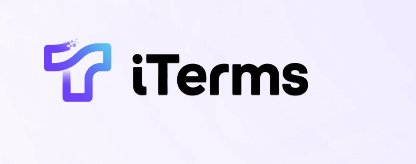24 Vue 中的父子组件传值
在 Vue 的组件化开发中,组件之间的通信是一个非常重要的话题。上一章我们学习了组件的生命周期,了解了组件的创建、更新和销毁过程。今天,我们将重点讨论父子组件之间的传值,掌握如何在 Vue 中高效地实现这一功能。
1. 组件之间的关系
在 Vue 中,组件之间的关系主要分为两类:父组件和子组件。父组件(Parent Component)通常用来包裹子组件(Child Component),并且可以通过 props 向子组件传递数据。而子组件也可以通过触发事件的方式,向父组件传递数据。
2. 使用 props 传值
2.1 props 的定义和绑定
props 是父组件向子组件传递数据的方式。在定义子组件时,我们需要声明 props,在父组件中使用子组件时,使用属性的方式进行数据的传递。
<!-- Parent.vue -->
<template>
<div>
<h1>父组件</h1>
<Child :message="parentMessage" />
</div>
</template>
<script>
import Child from './Child.vue';
export default {
components: {
Child,
},
data() {
return {
parentMessage: 'Hello from Parent!',
};
},
};
</script>
<!-- Child.vue -->
<template>
<div>
<h2>子组件</h2>
<p>{{ message }}</p>
</div>
</template>
<script>
export default {
props: {
message: {
type: String,
required: true,
},
},
};
</script>
在上面的例子中,Parent.vue 作为父组件,通过 message 属性将数据传递给子组件 Child.vue。子组件通过 props 来接收和使用这个数据。
2.2 props 的类型校验
在使用 props 时,可以通过设置 type 和 required 来进行类型校验和必要性校验。在上个例子中,我们声明了 message 为必须的字符串类型。
3. 传递复杂数据
除了基础的数据类型,我们还可以使用 props 传递更复杂的数据结构,比如对象和数组:
<!-- Parent.vue -->
<template>
<div>
<h1>父组件</h1>
<Child :info="parentInfo" />
</div>
</template>
<script>
import Child from './Child.vue';
export default {
components: {
Child,
},
data() {
return {
parentInfo: {
title: 'Hello from Parent!',
description: 'This is a parent component description.',
},
};
},
};
</script>
<!-- Child.vue -->
<template>
<div>
<h2>子组件</h2>
<h3>{{ info.title }}</h3>
<p>{{ info.description }}</p>
</div>
</template>
<script>
export default {
props: {
info: {
type: Object,
required: true,
},
},
};
</script>
在这个例子中,父组件传递了一个对象 parentInfo 给子组件,子组件则展示了这个对象的内容。通过 props,实现了数据的灵活传递。
4. 通过事件向父组件传递数据
虽然 props 允许父组件向子组件传递数据,但有时子组件需要向父组件发送数据。为此,我们使用 自定义事件。这一点将在后续的章节中详细讨论,但在这里,我们简单演示一下如何通过 $emit 方法传递数据。
<!-- Child.vue -->
<template>
<div>
<h2>子组件</h2>
<button @click="sendMessage">发送消息给父组件</button>
</div>
</template>
<script>
export default {
methods: {
sendMessage() {
this.$emit('message-sent', 'Hello Parent! This is a message from Child.');
},
},
};
</script>
<!-- Parent.vue -->
<template>
<div>
<h1>父组件</h1>
<Child @message-sent="handleMessage" />
</div>
</template>
<script>
import Child from './Child.vue';
export default {
components: {
Child,
},
methods: {
handleMessage(msg) {
console.log(msg); // Output: Hello Parent! This is a message from Child.
},
},
};
</script>
在这个示例中,子组件 Child.vue 通过按钮点击事件触发自定义事件 message-sent,向父组件发送消息。父组件则通过 @message-sent 监听这个事件,并在 handleMessage 方法中处理。
5. 小结
在本章中,我们学习了如何在 Vue 中实现父子组件之间的通信,主要通过 props 来实现从父组件向子组件传值,以及通过 $emit 方法来向父组件发送数据。这些知识将为后续的自定义事件使用打下良好的基础。
下章将进一步探索 Vue 中的自定义事件和更多的组件间通信方式,敬请期待!
